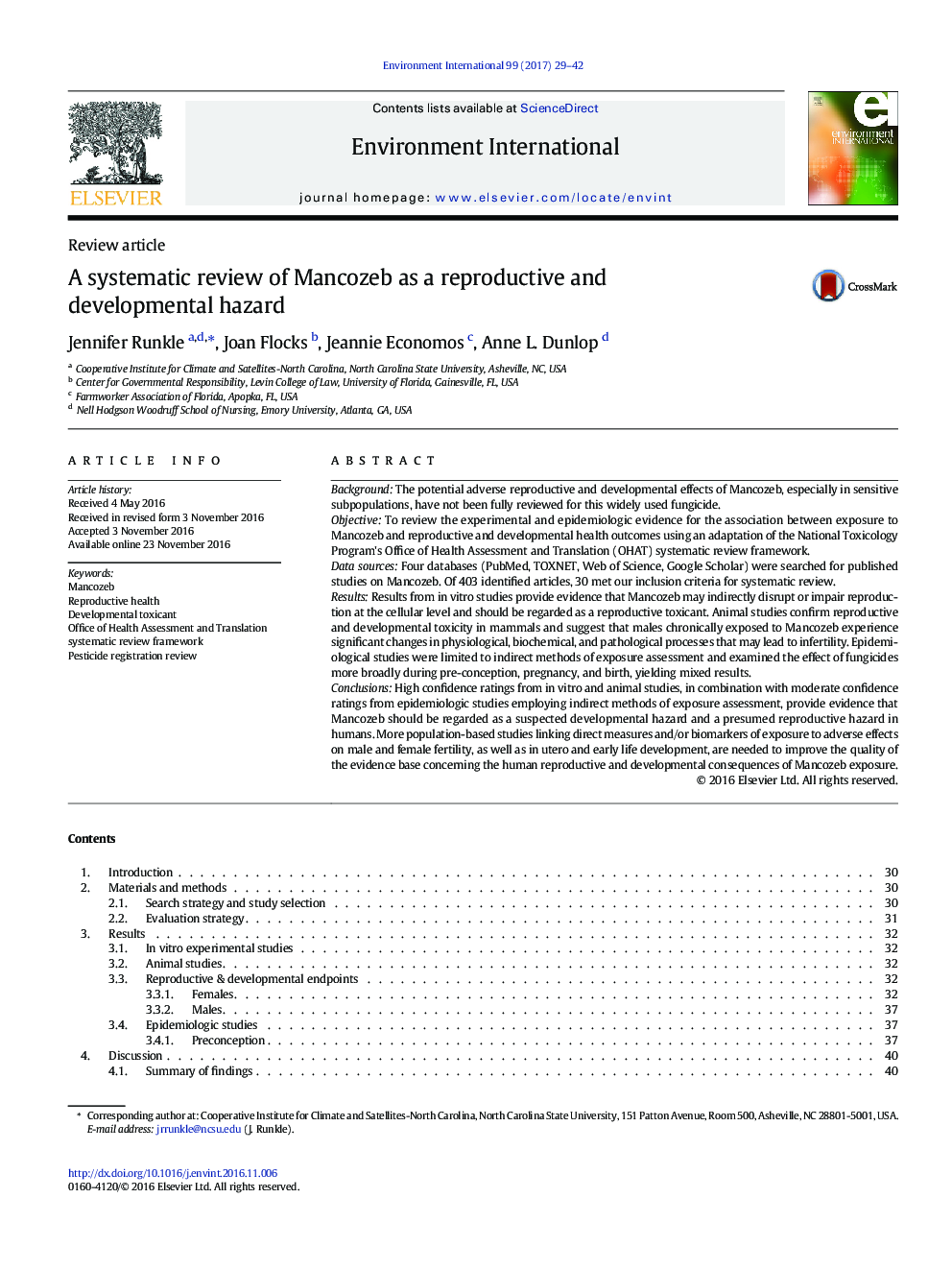| Article ID | Journal | Published Year | Pages | File Type |
|---|---|---|---|---|
| 5748395 | Environment International | 2017 | 14 Pages |
â¢Regulatory bodies should consider reproductive health impacts in registration review of Mancozeb.â¢Animal studies provide high to moderate confidence for reproductive and developmental toxicityâ¢Human studies provide moderate to low level of confidence as a reproductive toxicantâ¢Systematic review frameworks to inform regulatory decision-making in chemical risk assessmentâ¢Gap in population-based health studies using direct measures of exposure to Mancozeb
BackgroundThe potential adverse reproductive and developmental effects of Mancozeb, especially in sensitive subpopulations, have not been fully reviewed for this widely used fungicide.ObjectiveTo review the experimental and epidemiologic evidence for the association between exposure to Mancozeb and reproductive and developmental health outcomes using an adaptation of the National Toxicology Program's Office of Health Assessment and Translation (OHAT) systematic review framework.Data sourcesFour databases (PubMed, TOXNET, Web of Science, Google Scholar) were searched for published studies on Mancozeb. Of 403 identified articles, 30 met our inclusion criteria for systematic review.ResultsResults from in vitro studies provide evidence that Mancozeb may indirectly disrupt or impair reproduction at the cellular level and should be regarded as a reproductive toxicant. Animal studies confirm reproductive and developmental toxicity in mammals and suggest that males chronically exposed to Mancozeb experience significant changes in physiological, biochemical, and pathological processes that may lead to infertility. Epidemiological studies were limited to indirect methods of exposure assessment and examined the effect of fungicides more broadly during pre-conception, pregnancy, and birth, yielding mixed results.ConclusionsHigh confidence ratings from in vitro and animal studies, in combination with moderate confidence ratings from epidemiologic studies employing indirect methods of exposure assessment, provide evidence that Mancozeb should be regarded as a suspected developmental hazard and a presumed reproductive hazard in humans. More population-based studies linking direct measures and/or biomarkers of exposure to adverse effects on male and female fertility, as well as in utero and early life development, are needed to improve the quality of the evidence base concerning the human reproductive and developmental consequences of Mancozeb exposure.
